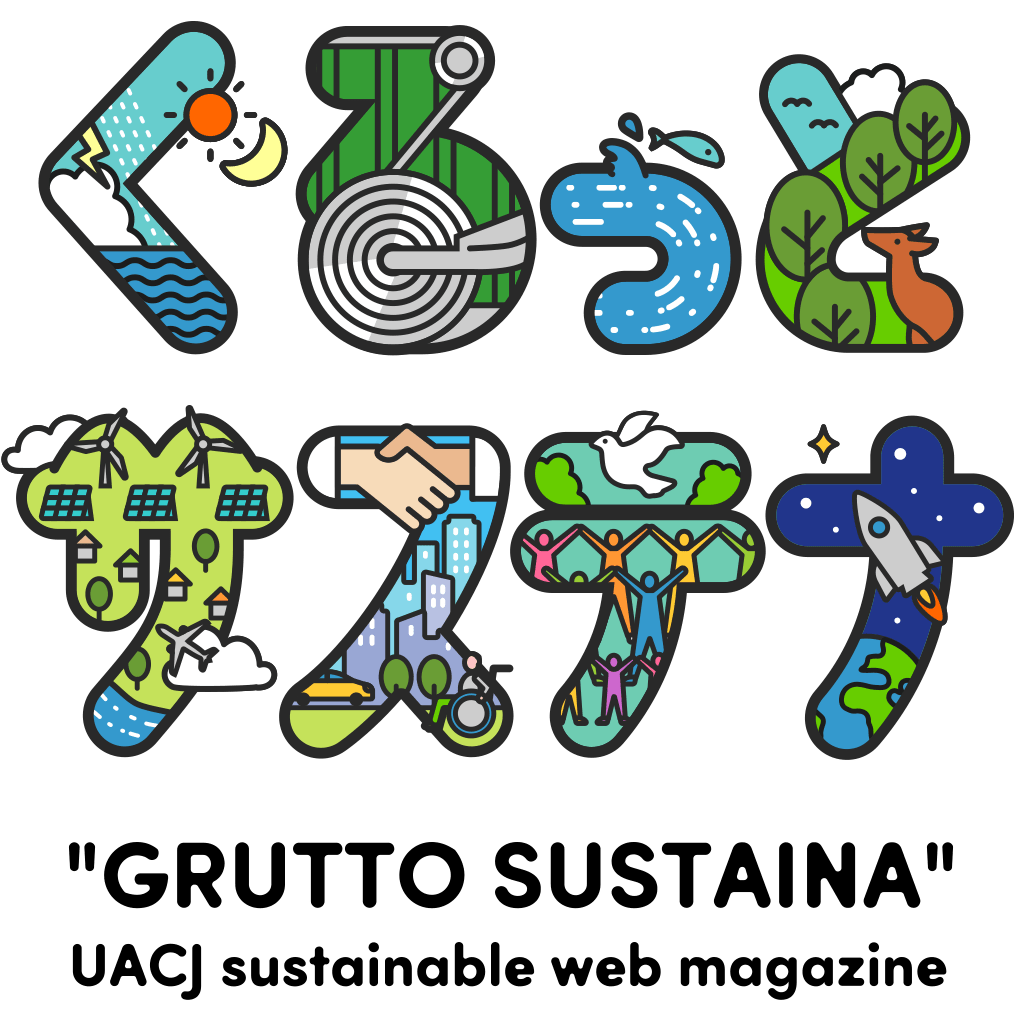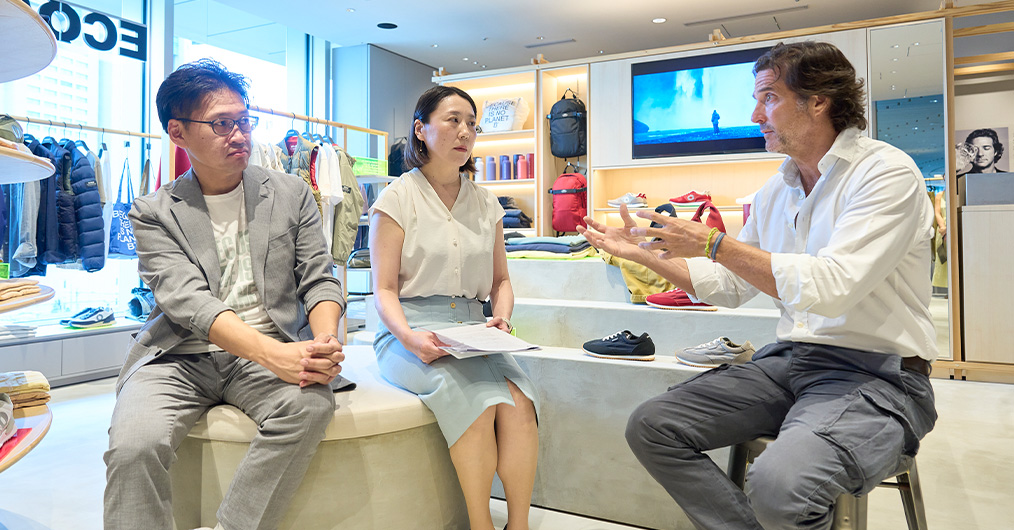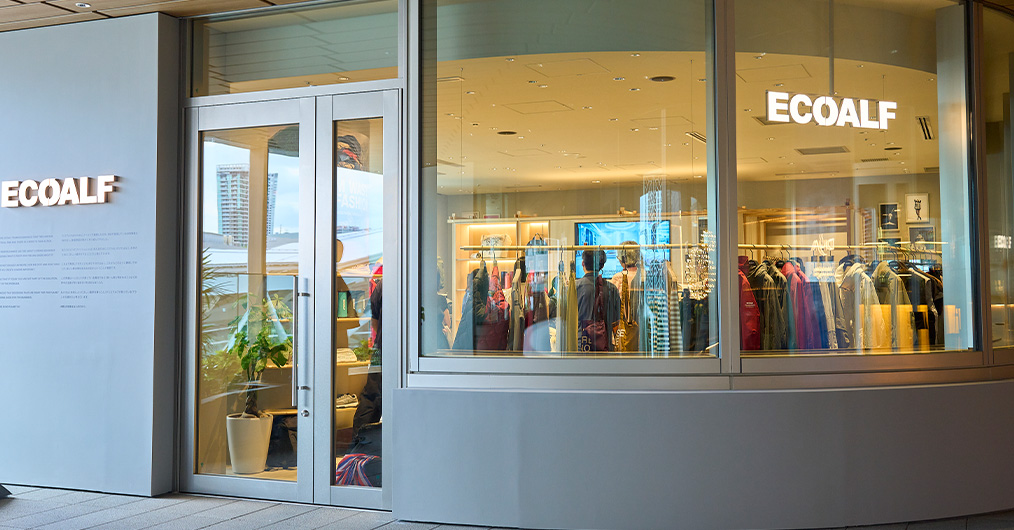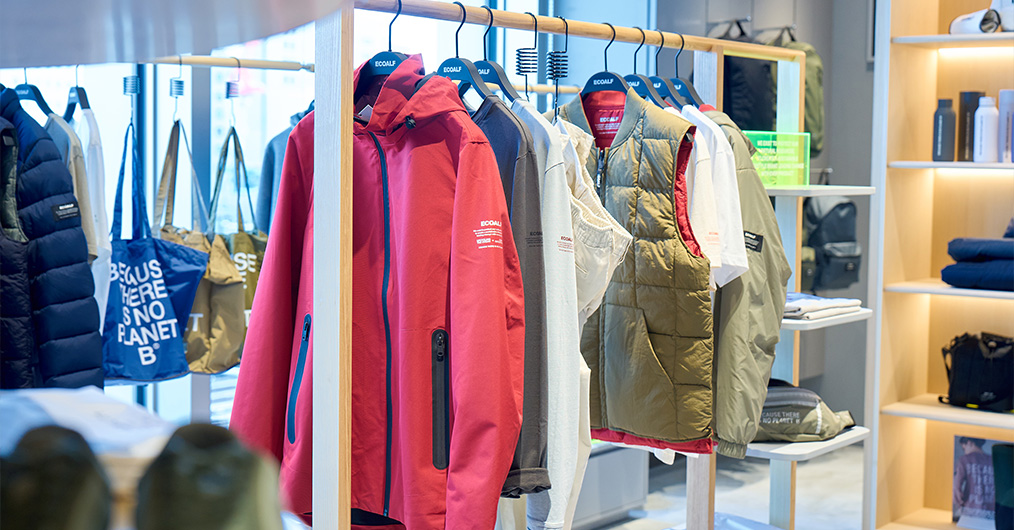COLLABORATION
Aluminum × Fashion
Part 1: An Interview with the Founder of Sustainable Fashion Brand “ECOALF” — What Does It Mean to Create Clothes That Make the World Better?
Part 1: An Interview with the Founder of Sustainable Fashion Brand “ECOALF” — What Does It Mean to Create Clothes That Make the World Better?

Featuring
ECOALF President / Founder
Javier Goyeneche
Javier Goyeneche

Interviewer
UACJ – Toshio Ushiyama

Interviewer
UACJ – Yuka Otsubo
“Because there is no planet B®.” Carrying this powerful message, the sustainable brand ECOALF has captured worldwide attention with its initiatives to turn ocean waste and discarded materials into clothing. As part of a new project, UACJ collaborated with ECOALF to create an aluminum “shoe tower” as a store fixture, featured at the Takanawa store. This interview comes in two parts: in Part 1, we speak with ECOALF founder Javier Goyeneche about sustainable fashion, and in Part 2, we go behind the scenes of the collaboration with Sanyo Shokai, which oversees ECOALF’s expansion in Japan.


On September 12, 2025, the commercial complex NEWoMan Takanawa opened at Takanawa Gateway Station. Among its lineup of cutting-edge brands from around the world is ECOALF, where UACJ’s Ushiyama and Otsubo visited to meet founder Javier Goyeneche—who was in Japan for the grand opening—and hear his story.
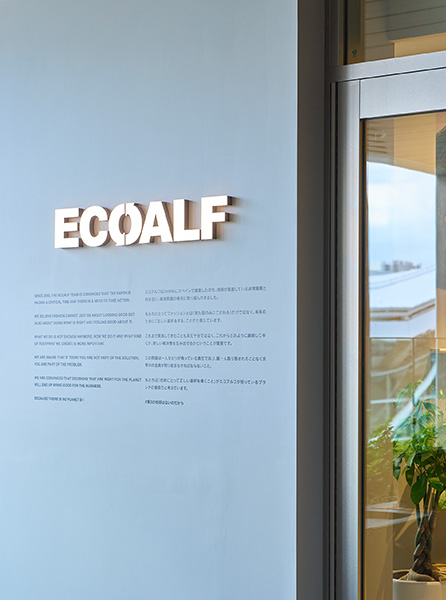
What inspired the birth of the brand?

Javier
The beginning of the brand was the birth of my sons, Alfredo and Álvaro, whose names also inspired the brand name. I asked myself, “What can I leave behind for my children’s future?” That question led me to found ECOALF in 2009.

Otsubo
And from there, you began rethinking the very way fashion should be?

Javier
That’s right. Even back then, I was constantly wondering what could be done about the environmental problems facing the fashion industry.

Otsubo
It is well known that the fashion industry is one of the sectors placing a heavy burden on the environment.

Javier
Just last week, I visited Ghana for field research, and what I saw there was truly shocking. There were mountains of fast fashion waste piled up, and I was told that as much as 15 million tons of waste are shipped there from Europe every week.

Otsubo
Fifteen million tons! That’s an almost unimaginable amount…

Javier
Fashion is beautiful, but at the same time, we keep repeating this cycle of mass production and mass disposal. If we do not face this problem seriously now and change how we create, and even how we live, there will be no future for our planet.
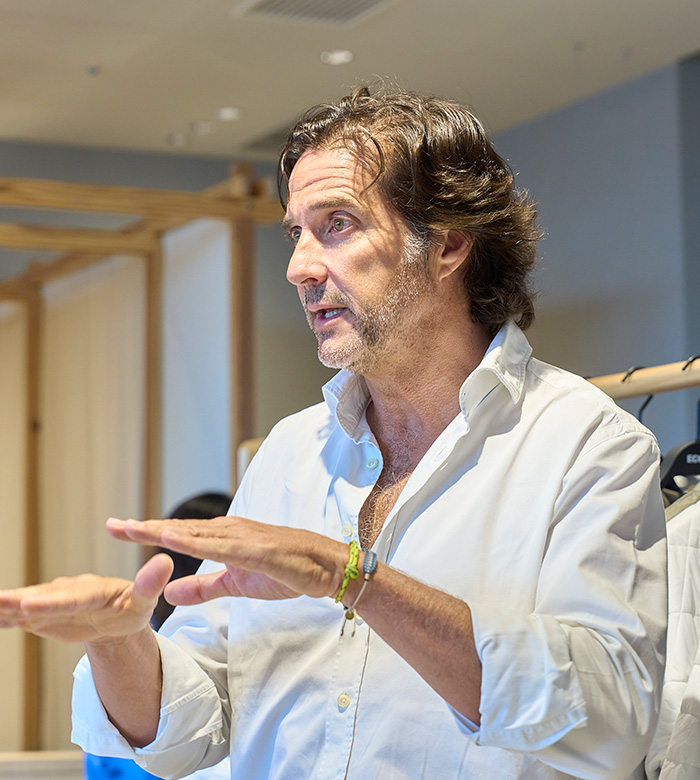
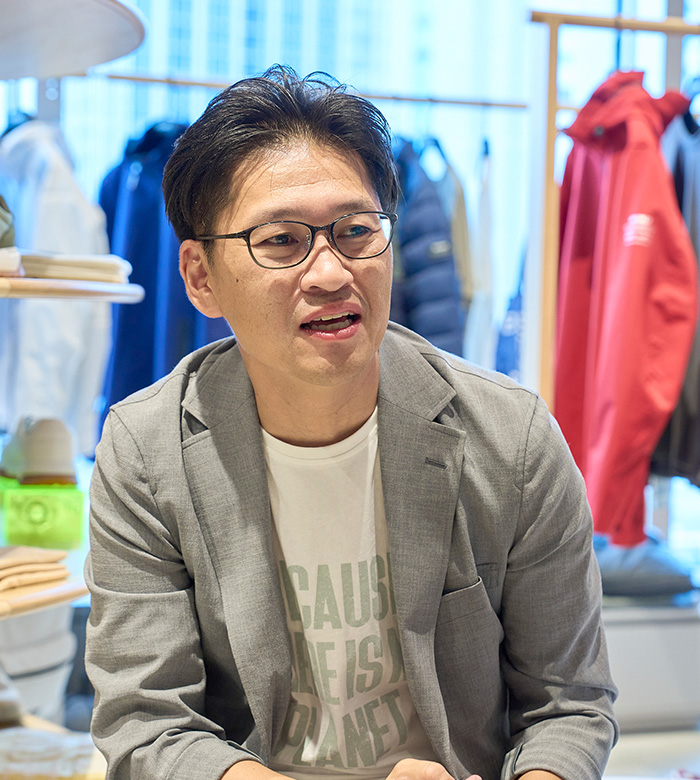
What does fashion created through recycling look like?

Javier
At ECOALF, every single item is made exclusively from recycled materials or low-impact natural fibers.

Ushiyama
Every single item—that’s impressive. For example, what kinds of materials do you use?

Javier
We use recycled nylon made from discarded fishing nets, old carpets, and nylon waste. We also use a wide range of materials, from discarded tires to coffee grounds.

Ushiyama
Materials that would otherwise be discarded are given new life. That’s an amazing cycle. How do you source them?

Javier
We operate the ECOALF Foundation, through which we support various environmental initiatives. Some of the waste we use as raw materials is collected through these activities.

Ushiyama
I see! And one of those initiatives is “Upcycling the Oceans,” right?

Javier
Yes. “Upcycling the Oceans” is a project we started in 2015 with Spanish fishermen to recover plastic waste from the seabed.

Otsubo
I’ve never heard of a fashion brand working directly with fishermen.

Javier
In fact, 75% of marine waste lies not on the surface, but on the seabed. When fishermen bring up waste while fishing, they take it back to shore, where it’s sorted, recycled, and transformed into fibers.

Otsubo
Cleaning up the ocean while making clothes—that’s such an innovative idea! To think that creating garments could also mean preserving and improving the environment.

ECOALF sneakers made from recycled and upcycled materials. Surprisingly lightweight and comfortable to wear, they feature a stylish design that avoids the negative associations of “waste.”
How can fashion help change the environment?

Javier
When people hear “sustainability in fashion,” recycled materials are probably the first thing that comes to mind. But in fact, it’s not just about that.

Ushiyama
What do you mean by that?

Javier
It’s about how we produce, how we deliver, and even how we promote. Every part of the process contributes to changing the environment through fashion.

Ushiyama
So there are innovations in the production process as well?

Javier
Yes. By shifting to production methods that reduce the use of resources such as electricity and water, we reduce our environmental impact.

Otsubo
So that’s part of what you mean by low-impact production and materials.

Javier
Recycled materials are also effective in reducing resource consumption. For example, using recycled cotton can save up to 2,500 liters of water per T-shirt compared to conventional cotton.

Ushiyama
When you put it into numbers, the impact becomes much clearer.

Javier
And there is also much we can do in our stores. We see the entire store as a stage to communicate our brand message. From the interior design and fixtures to the experiences we create and the information we share, the store itself is a place where people can truly feel sustainability.

Otsubo
Are you applying that approach here at the NEWoMan Takanawa store as well?

Javier
Yes. Under the concept of “simplicity,” we use materials like plaster and reclaimed wood for the walls, floors, and fixtures. With as few materials as possible, we’ve created a simple and minimal space that reflects a sense of Japanese style.

Otsubo
The idea of making the store itself a platform for communicating sustainability is fascinating.

Javier
For me, what matters most in store design is incorporating the climate and culture of the country or region. By respecting local identity and traditions, and creating spaces that feel familiar and welcoming to local people, we can bring sustainability closer to their everyday lives.

Otsubo
That’s a very open-minded perspective. I’ve learned a lot from this.
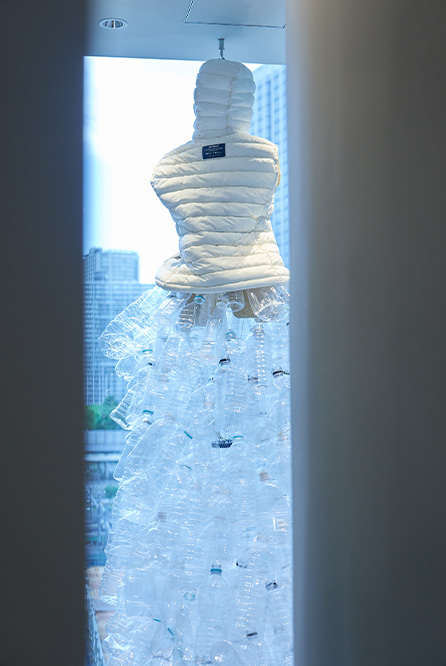
An installation of mannequins made from PET bottles collected through a recycling project. Taking advantage of its location, visible even from Takanawa Gateway Station, the store serves as a platform to communicate the brand’s message.
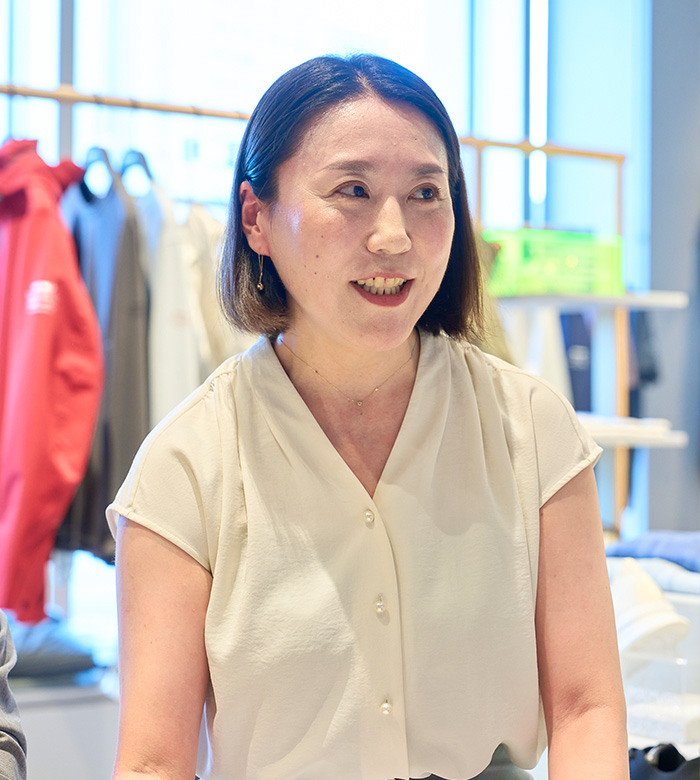

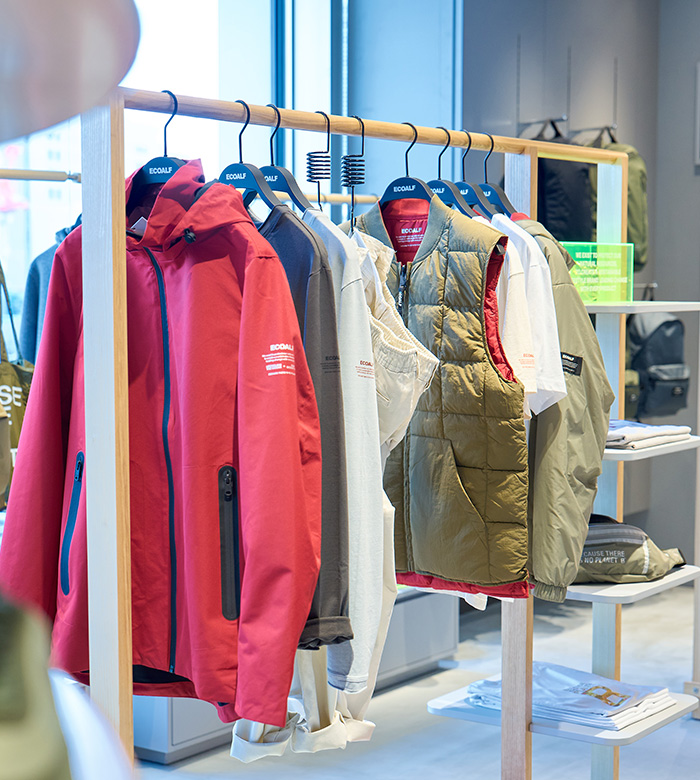
Can “eco-friendly” and “fashionable” really go hand in hand?

Javier
It’s difficult, but I believe they can. At ECOALF, our mission is to create products with the same quality and design as those made from virgin materials.

Ushiyama
So your aim is to make items that are sustainable but still put strong emphasis on fashion?

Javier
Exactly. As a fashion brand, we believe it’s important that our products are beautiful to look at and that people genuinely want to wear them.


Otsubo
That perspective is also key to updating the image of sustainability.

Javier
When we founded the brand in 2009, recycling and sustainability were often seen as “not cool,” carrying a rather negative image. It was like the idea of taking your grandmother’s old blanket and turning it into something else.
But what I wanted to do was not just remake, but build quality products right from the material stage—turning waste into circular polymers, then into yarn, then into fabric, and finally into clothing.
But what I wanted to do was not just remake, but build quality products right from the material stage—turning waste into circular polymers, then into yarn, then into fabric, and finally into clothing.

Otsubo
Starting from the material level must have been a tremendous challenge.

Javier
The first few years were indeed very tough. Because we had to begin by finding and developing materials, although we founded ECOALF in 2009, our first collection didn’t launch until 2013. We kept pursuing what we believed in, taking the time it required, and now we are finally seeing it bear fruit.

Otsubo
At UACJ, we’ve also launched our brand “ALmitas⁺ SMART,” which makes use of recycled aluminum. Hearing your story is truly encouraging! It shows us that we must keep believing and continue working steadily.

Ushiyama
If you had to describe ECOALF’s design in one word, what would it be?

Javier
Timeless. We aim for a timeless universality and lasting quality—designs that will be loved for years to come.

Ushiyama
Expressing universal values through products—this, too, is a form of sustainability!

PREVIEW FALL/WINTER ’25 NEW COLLECTION — featuring 83 different materials.
What is your view of Japan as a market?

Javier
I consider Japan to be one of the key markets in the world.

Ushiyama
And why is that?

Javier
Compared to Europe, sustainable fashion has not yet taken root in Japan. That’s precisely why I see great potential for growth here.

Ushiyama
As you say, in Japan, sustainable fashion—and even the awareness of it—has not yet fully spread.

Javier
To be honest, I was shocked. I often hear people say that Japan is behind in sustainability or that it doesn’t place much importance on it. But my impression has always been that Japan is a country that values tradition, culture, and nature. So I wonder, why doesn’t that naturally connect with sustainability?

Ushiyama
Since we deal with aluminum, in Europe it’s quite common for people to choose aluminum bottles precisely because they are “a more sustainable material.” But in Japan, it’s completely different. You can really sense the difference in awareness.

Javier
I truly hope Japan will engage more deeply with sustainability, and I firmly believe this country has the ability to do so.

Ushiyama
Exactly—“Because there is no planet B ®.”


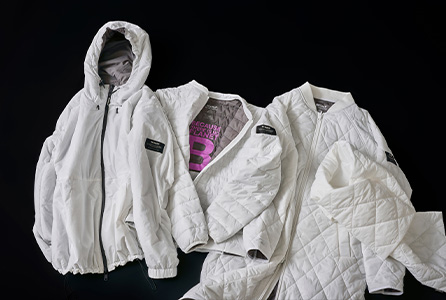
ECOALF also offers the Japan-exclusive “ACT” collection. Javier’s philosophy of incorporating each country’s culture and identity is reflected not only in the store concept, but also in the products themselves.
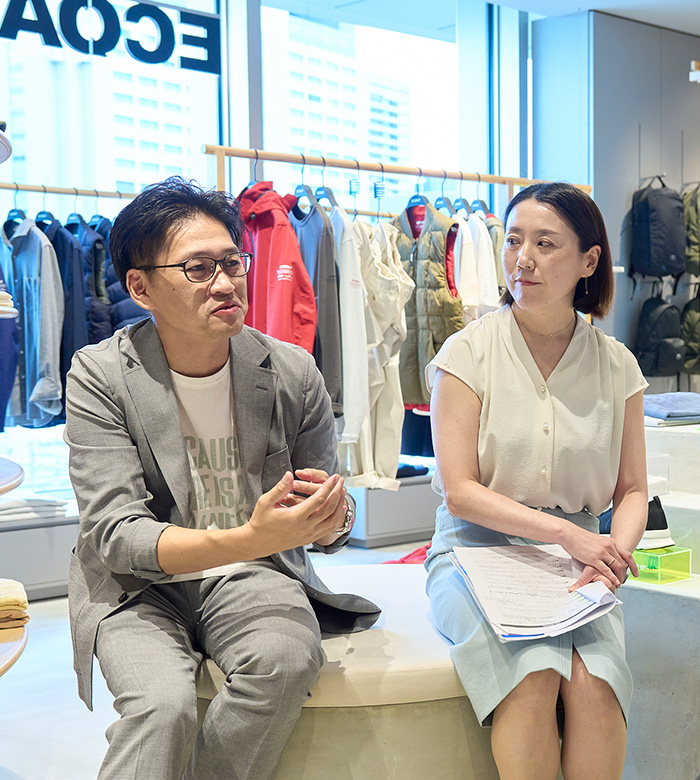
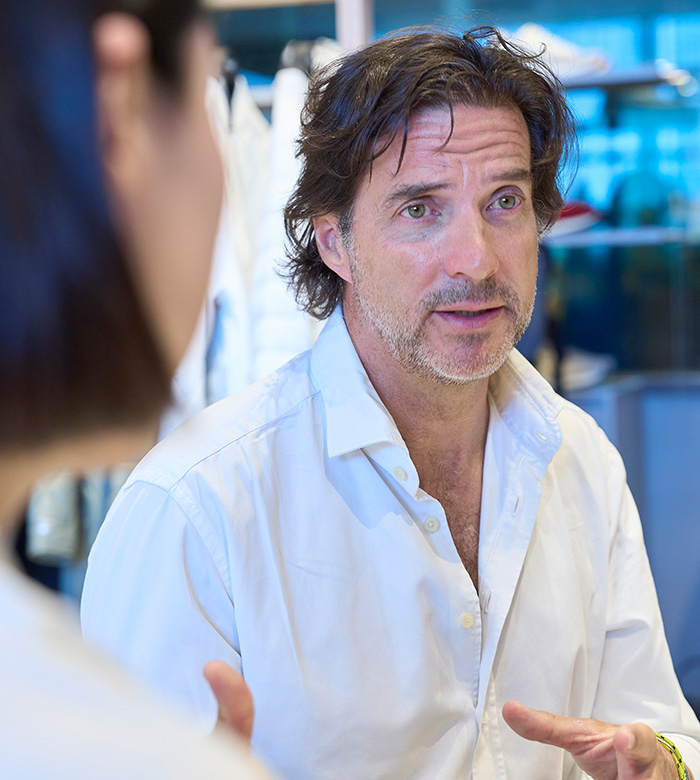
What are your impressions of aluminum?

Javier
I understand that aluminum is a highly circular material that can be reused almost indefinitely, so I see a lot of potential in it.

Ushiyama
If you were to make something out of aluminum yourself, what would it be?

Javier
Probably accessories. I’d also like to build a store in Japan made entirely of aluminum.

Ushiyama
This time, UACJ worked with you to create an aluminum shoe tower, developed as a new type of sustainable fixture.

Javier
It would be great to see more aluminum fixtures in the future. I have high hopes for these kinds of new initiatives.

Ushiyama
Starting October 8, 2025, you’ll also be holding a pop-up event at Isetan Shinjuku, right? We’ll be providing new aluminum fixtures there as well, which we’re very excited about. By the way, this time you also used aluminum chopsticks as a novelty item—what are your thoughts on those?

Javier
I love them! I really like that they’re so uniquely Japanese. I can’t wait to try them myself.
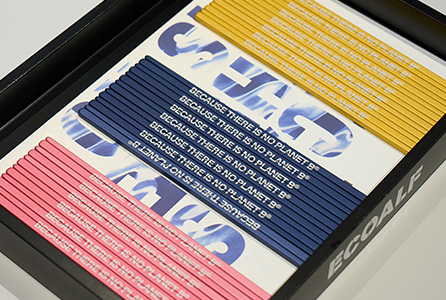

How do you think the future will change?

Javier
That’s a difficult question. New technologies and new materials are emerging every day. Since I started the brand, the more I’ve done, the more new things I’ve wanted to try—it just keeps growing.

Otsubo
Which means both technology and awareness are constantly being updated.

Javier
When we founded the brand in 2009, there were virtually no sustainable materials available. But in less than twenty years, such materials have been created, have spread, and we now use as many as 683 different fabrics in our products. That’s why I’m always asking myself: is this the best we can do? Is there more we could be doing?

Otsubo
You’re always in pursuit of something new. Thinking that in the future clothes might be made from materials we can’t even imagine today—it’s exciting!

Ushiyama
Today’s conversation has made me feel once again that by working with aluminum, we too can help raise awareness of sustainability and contribute to creating a better environment. We’ll do our best!

Javier
Let’s do our best together—for the future of our planet. Thank you!

Ushiyama

Otsubo
Thank you very much.
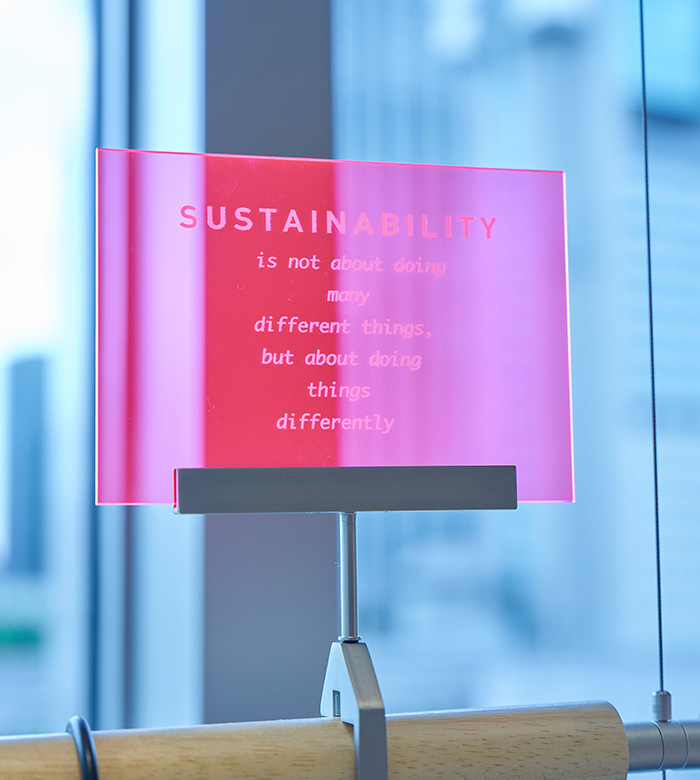
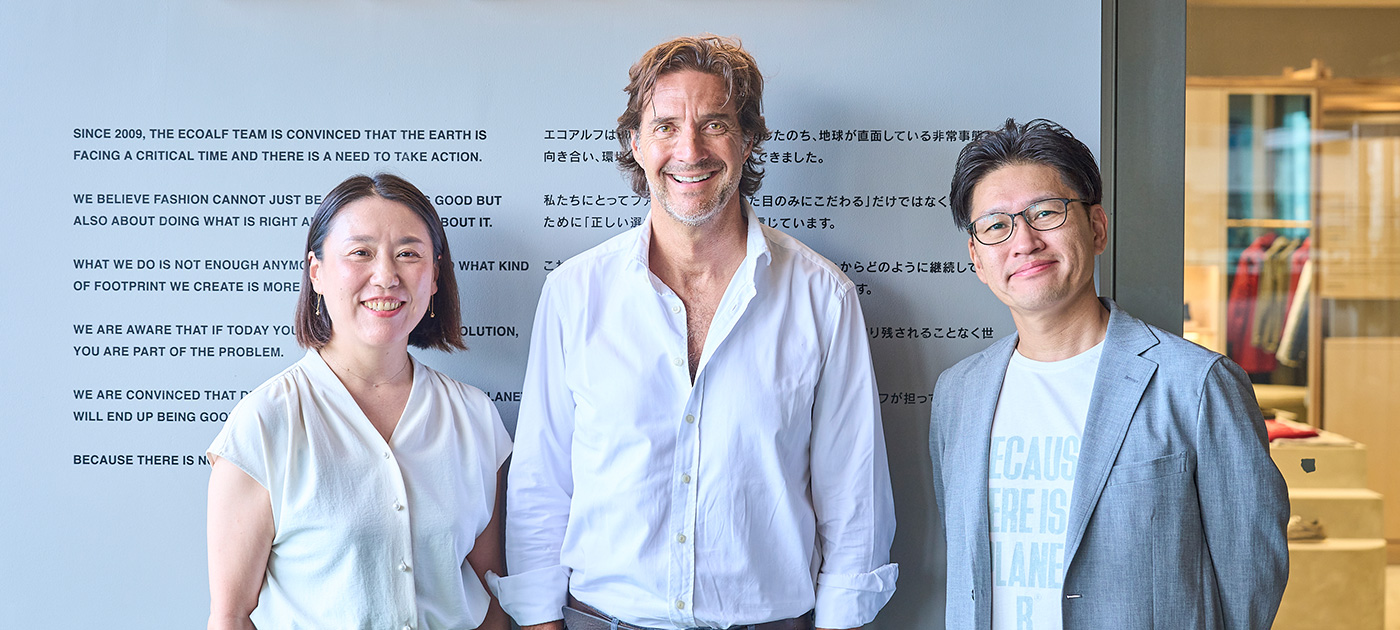


AFTER INTERVIEW

UACJ Toshio Ushiyama
I was struck by the phrase “timeless design.” I was also surprised to learn that sustainability can be expressed not only through the use of recycled materials, but in other ways as well. Javier’s approach of going back to the very materials to realize his vision made me once again feel the true potential of materials. Going forward, I want to demonstrate the possibilities of aluminum for the future of our planet.
Profile
In the Marketing Department, I am exploring future markets by creating connections that are lighter and brighter across diverse industries.

UACJ Yuka Otsubo
I was deeply moved by Javier’s words: “Japan has so much that is inherently sustainable—its nature, traditions, and culture—so why isn’t it naturally associated with sustainability?” Even today, traditions such as kimono continue to be handed down in ways adapted to modern life. Yet perhaps we ourselves are starting to forget these things. Now more than ever, I want us to explore together, through collaboration, what a uniquely Japanese model of a sustainable society could look like. In that, I truly felt the spirit of SDG 17.
Profile
In the Sustainability Planning Department, I continue my own small steps toward sustainability—choosing eco-friendly foods, detergents, and cosmetics, and using refill stations—while finding joy even in the small inconveniences.
ECOALF POP-UP EVENT
Dates: October 8–14, 2025
Location: Isetan Shinjuku, 2F
Event URL
https://store.sanyo-shokai.co.jp/blogs/news/ea-isetanshinjuku-251008
Location: Isetan Shinjuku, 2F
Event URL
https://store.sanyo-shokai.co.jp/blogs/news/ea-isetanshinjuku-251008
* This event has ended.
NEXT
Interview, Part II
In the next interview, we will feature the collaboration between ECOALF and UACJ’s eco-conscious brand ALmitas⁺ SMART. This marks UACJ’s first initiative in the apparel industry, focusing on “recycled aluminum fixtures.” Through interviews with UACJ members involved in the project and Mr. Shimokawa of Sanyo Shokai (ECOALF Japan), we will share the behind-the-scenes story of how the shoe tower was developed.
* The information in this article was current at the time of the interview.

